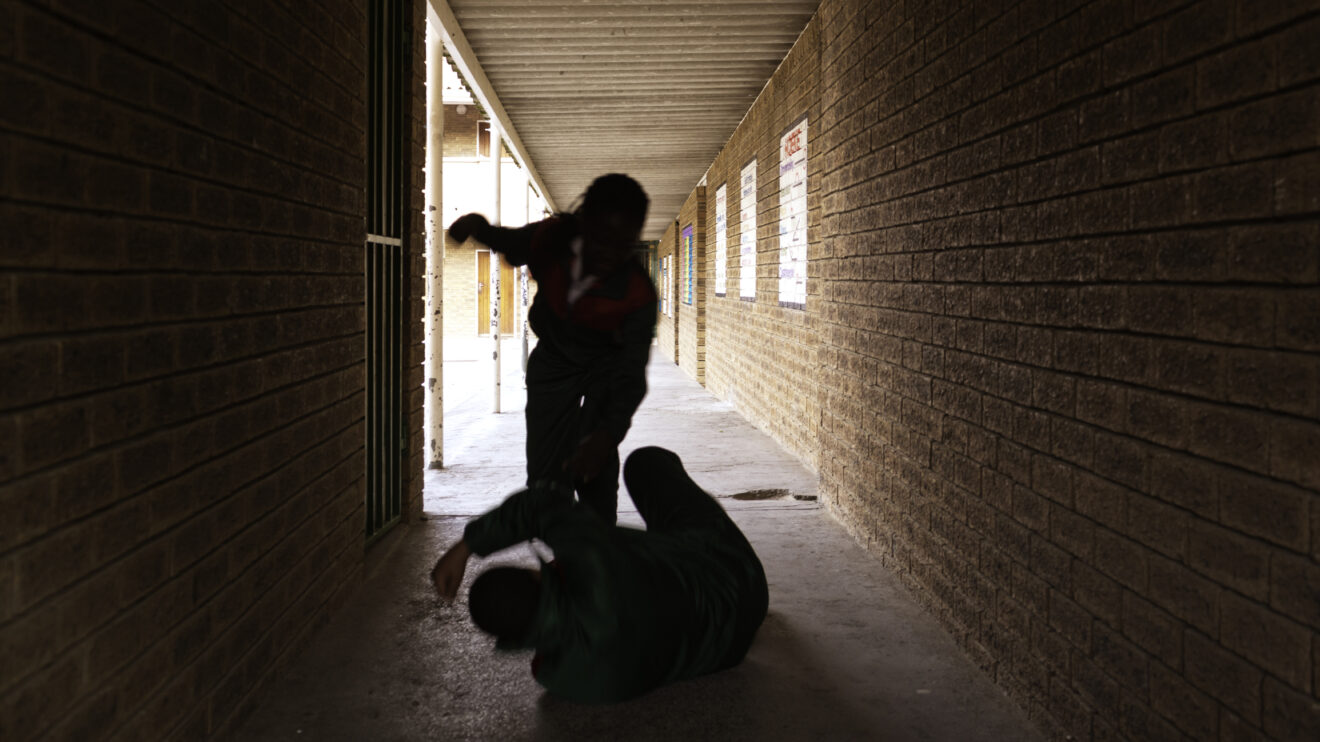Insights is a SmartBrief Education Originals column that features perspectives from noted experts and leaders in education on the hot-button issues affecting schools and districts. All contributors are selected by the SmartBrief Education editorial team.

According to a recent report from the National Center for Education Statistics, school shootings in the 2020-21 school year rose to the highest number in two decades, with gunfire on K-12 campuses quadrupling from the previous year. During the 2019-20 school year, more than 900,000 violent incidents and nearly 500,000 nonviolent incidents — such as theft, vandalism and possession of illegal drugs or alcohol — occurred in US public schools. The report also found that cyberbullying and student discipline problems related to teachers and classrooms have become more common over time. The need for comprehensive school safety measures has never been more important.

As the number of these types of incidents grows, legislation is being passed in many states to help staff respond more quickly when they occur. Alyssa’s Law — which requires all public elementary- and secondary-school buildings to be equipped with a silent panic alarm connected to local law enforcement — has been implemented in New Jersey, New York and Florida and introduced into legislation in a number of other states.
This law was created by Lori Alhadeff, mother of Alyssa Alhadeff, who was killed when a former student opened fire inside Marjory Stoneman Douglas High School in Parkland, Fla. Before the shooting, multiple staff members saw the gunman get out of his car with a rifle bag, but there wasn’t an effective way to communicate this to their colleagues. By the time a code red was called three minutes and 19 seconds later, multiple fatalities and injuries had already occurred.
Schools across the US without legislation in place are implementing their own protocols and solutions to protect staff and students. Technology can help. With some systems, school staff can send a schoolwide alert and also identify where they are on campus, and this can be integrated with the 911 center and any other public safety answering points.
From everyday incidents to mass tragedies, schools must keep in mind the three phases of emergency response: prevention and mitigation; preparedness and response; and determination of the solution that offers the quickest and fastest response.
Phase 1: Prevention
It is important that schools have a multifaceted approach in place to help prevent day-to-day incidents, such as a scuffle on the playground, as well as worst-case scenarios. Several well-planned school safety measures can work together to create safer environment.
Often, the size and number of students during arrival and dismissal create challenges, especially at high-school campuses. Single points of access often are used during normal operational school hours, but that can change during arrival and dismissal. Once the bell rings at the end of school, you get a lot of movement all at once. Some students will wait at the bus or car drop-off lines, parking lot or bike racks, or walk home or stay for after-school activities.
Having specific staff or faculty members assigned to these egress and ingress locations can be what prevents someone who is a threat from gaining access in the midst of the chaos of students leaving.
Every day schools have visitors and volunteers entering and exiting the building. Ideally, they have a system in place to allow administrators to efficiently and effectively vet guests and check them in.
In my 30-plus years of working with the Tampa Police Department and now with the Hillsborough County Public School District in Florida, I have found three ways all schools can prepare for any type of emergency.
- Maintain access control. This can be accomplished with fencing around the school campus and ensuring that any doors outside of the fence are locked, except for the single entry door. This will limit the potential of visitors entering the building without being noticed. A school main gate and/or the front building entrance should have controlled access and the ability for the security and/or front desk team to see who is requesting entrance, as well as the ability to restrict access if needed.
- Vet all visitors. A visitor and volunteer management solution can be highly effective when trying to track their location on campus at all times. It also can automate searches of unauthorized visitors. Used as instructed, these systems can help prevent a dangerous person from entering the school grounds or buildings.
- Be vigilant. Districts should encourage staff and students to “see something, say something.” They should be encouraged to speak up, even if they think it may not be a big deal, and know that anything they report will be taken seriously. This is often a culture change for teachers or administrators who think that “it can’t happen here.” Safety is everyone’s responsibility.
Phase 2: Preparedness
In the event that an emergency does occur, there must be a plan and protocols in place to ensure efficient and effective communication between staff, students and first responders.
It’s impossible to predict how an individual may react during a time of distress, but having a set of guidelines to follow for every type of incident can help staff and students feel confident about the steps they need to take should something occur.
Drills throughout the school year can help staff and students practice what to do in certain situations, whether a fire, weather-related emergency or active shooter. This also allows districts to assess if their school safety measures and plan are effective and identify where changes may need to be made.
If the school has an incident response platform installed, be sure that all staff members know how to access and use it. Incorporate its use into all drills to ensure familiarity with the technology.
Staff must feel confident in the emergency preparedness plan. Concerns and feedback should be welcomed. Staff members take on a heavy burden and responsibility in how they react to events, and they must feel protected and empowered to act accordingly.
Phase 3: Response
Rapid response plays a critical role in emergency incidents and, ultimately, can be the difference between life and death. When it comes to safety planning, it’s critical that districts have a well-rounded strategy to identify emergency situations and respond. In the case of school safety measures, technology has the power to help get information across multiple channels quickly and efficiently.
Whether a fight breaks out, a student is sick in the hallway or a student is injured on the football field, help can arrive more quickly when staff has the tools to notify colleagues discreetly.
In the most tragic of situations, being able to send discreet alerts that use precise locations allows students and staff to retreat to safe spaces while waiting for help and allows responding officers to locate them once they’re on-site.
Systems that do not rely on wireless service can reduce potential complications and risks with having to use a mobile phone. A phone usually is a personal rather than school-owned device, will have to be on their person at all times, and require them to unlock it, open the app and indicate an incident. Those aren’t easy tasks during distress. Additionally, it would require reliable cell service in every part of the campus.
Technology is a great asset, but it does not replace the people you have on your campus and their duty to be vigilant. Security is everyone’s job, and technology can only assist in that endeavor. If you see something, say something. That will always be the most basic of school safety measures.
US schools continue to experience violent and non-violent incidents inside and outside of the classroom. Everyday situations like medical emergencies and altercations between students are likely to occur. However, having a safety strategy in place that incorporates measures of prevention, preparedness and response can greatly impact the outcome.
John Newman has served as the chief of security and emergency management for Hillsborough County Public Schools in Florida since April 2014. He previously served as the assistant chief of investigations and support for the Tampa Police Department before retiring after 29 years of service.
Roderick “Rocky” Sams, Ed.D., has two decades of experience as an educator and school administrator and experience in business roles with education-related technology companies and partnerships for education nonprofits. As chief development officer at Centegix, he reinforces the concept that a safe learning environment is the first step in promoting high academic achievement.
Opinions expressed by SmartBrief contributors are their own.
_________________________
Subscribe to SmartBrief’s FREE email newsletter to see the latest hot topics on EdTech. It’s among SmartBrief’s more than 250 industry-focused newsletters.
